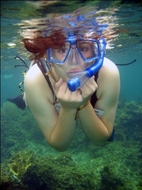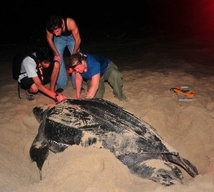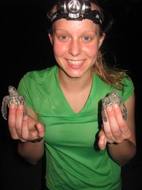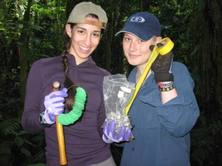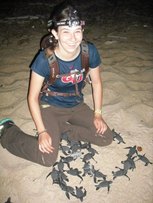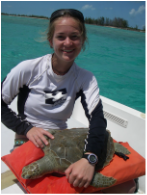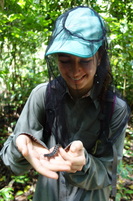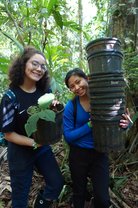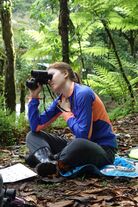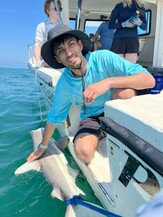Student Expeditions
I believe deeply in the Earthwatch mission of promoting science and environmental awareness by connecting volunteers with field science projects. It has been very rewarding to take my students on Earthwatch expeditions to the Bahamas, Trinidad, Peru, Costa Rica, Ecuador and Belize to participate in valuable science, learn about global conservation concerns, and make a positive impact in the world.
It takes a lot of advance planning and preparation to make a trip like this come to fruition. Planning for this expedition begins about 16 months before a trip. I worked closely with Earthwatch to select a project that aligns with my educational goals for the students, fits our calendar of availability and is in a reasonably accessible location. Once an expedition is selected, I have to begin advertising to the students for enrollment. I am fortunate to have relatively easy time getting students to enroll thanks to word of mouth advertising. Expeditions typically fill within a few weeks of the start of the school year.
Once the team is set, the focus shifts to logistical arrangements. I focus on getting travel finalized; Earthwatch forms complete, vaccinations, and packing. It is a lot of extra work on top of my daily work, and I’ll admit that there are a few moments of, “why am I doing this again…?” during the process.
The answer to that question is easily answered once we arrive at our destination. I feel an overwhelming pride when my students are patrolling a beach, independently collecting data, tagging and measuring wildlife, transect sampling and assisting with authentic science. The students are eager to learn, passionately caring and committed to making an impact. These kids should give us all reason to be optimistic for the future of humanity and our planet.
It takes a lot of advance planning and preparation to make a trip like this come to fruition. Planning for this expedition begins about 16 months before a trip. I worked closely with Earthwatch to select a project that aligns with my educational goals for the students, fits our calendar of availability and is in a reasonably accessible location. Once an expedition is selected, I have to begin advertising to the students for enrollment. I am fortunate to have relatively easy time getting students to enroll thanks to word of mouth advertising. Expeditions typically fill within a few weeks of the start of the school year.
Once the team is set, the focus shifts to logistical arrangements. I focus on getting travel finalized; Earthwatch forms complete, vaccinations, and packing. It is a lot of extra work on top of my daily work, and I’ll admit that there are a few moments of, “why am I doing this again…?” during the process.
The answer to that question is easily answered once we arrive at our destination. I feel an overwhelming pride when my students are patrolling a beach, independently collecting data, tagging and measuring wildlife, transect sampling and assisting with authentic science. The students are eager to learn, passionately caring and committed to making an impact. These kids should give us all reason to be optimistic for the future of humanity and our planet.
Costa Rica (2017)Belize (2024)
|
Costa Rica (2018) |
Arizona (2022) |
Florida (2023)
|
